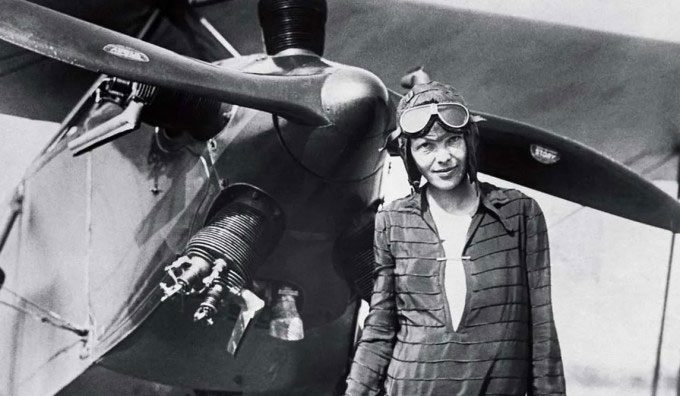An ocean exploration company shared sonar images in September 2023 of an object resembling an aircraft, believed to be the Lockheed 10-E Electra of legendary pilot Amelia Earhart.

Pilot Amelia Earhart before her disappearance. (Photo: Wikimedia Commons)
Amelia Earhart, the first female pilot to fly solo across the Atlantic Ocean, made her last flight in 1937. In an attempt to fly around the world, Earhart’s journey ended when she disappeared over the Pacific Ocean, becoming one of aviation’s greatest mysteries. Despite years of search efforts, Earhart’s remains and the wreckage of her missing aircraft have yet to be found.
Nearly 90 years after Earhart vanished and was declared legally dead in 1939, Deep Sea Vision announced the discovery of an object that is likely the plane Earhart piloted during her 1937 expedition. According to the South Carolina-based company, sonar images reveal an aircraft-shaped object on the ocean floor. Deep Sea Vision CEO Tony Romeo has a keen interest in Earhart’s disappearance. Therefore, he undertook a 100-day journey with a $9 million Hugin drone in search of Earhart’s aircraft.
Setting off from Tarawa, Kiribati in September 2023, Romeo and a 16-member search team explored an ocean floor area of 13,468 km2 and captured images of an aircraft-shaped object approximately 160 km from Howland Island about a month later. However, they made their discovery on the 90th day of the expedition and were unable to return to the site for further examination. Dorothy Cochrane, an expert at the Smithsonian National Air and Space Museum, noted that the location described by Romeo aligns geographically with the site believed to be where Earhart’s plane crashed.
However, experts emphasize the need for clearer images and more specific details, such as the aircraft’s serial number, to draw any conclusions. As the next step, Romeo plans to return with various types of sensors to take more detailed photographs of the object and assess its condition on the ocean floor. He intends to use an autonomous submersible equipped with cameras and sonar to capture sharper images of the object located more than 5,029 meters below the surface. While he does not rule out the possibility that the object could be another missing aircraft or an unrelated man-made object, Romeo expresses confidence in the discovery due to the distinctive shape of the fuselage, tail, and wings.


















































